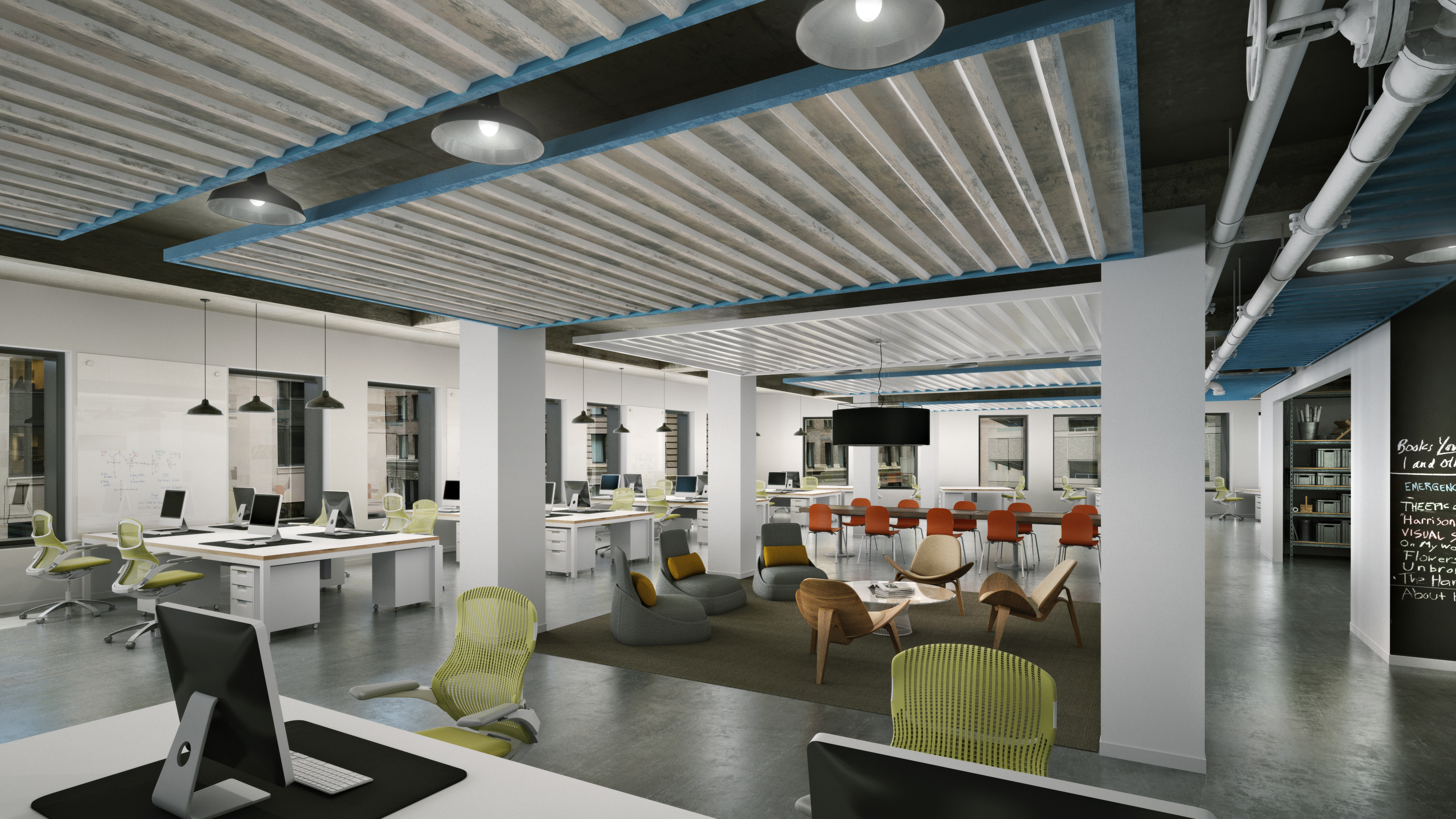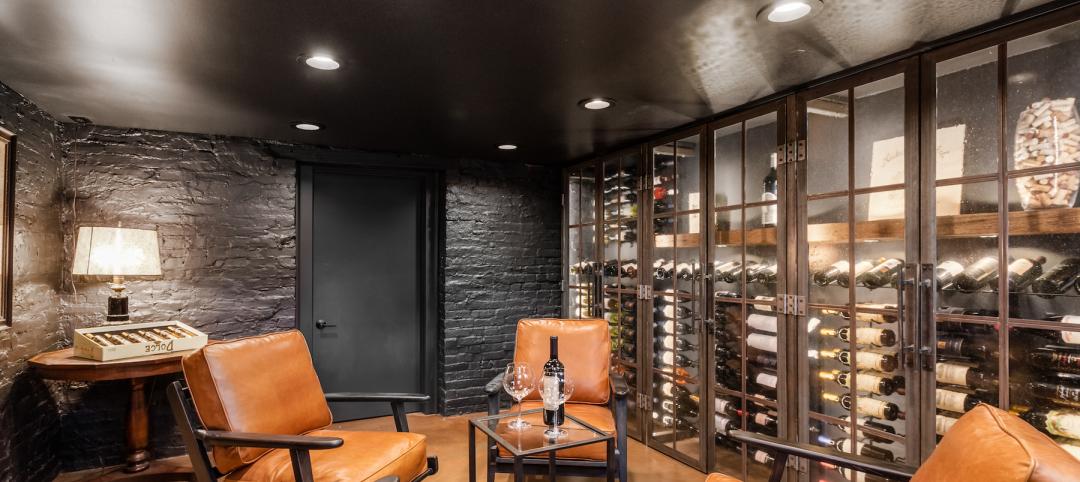In the world of architecture, generating buy-in from the client or prospect is nearly impossible without the visual means to communicate design plans. Today, the visualization industry is crowded; renderings are a near commodity. Thanks to social media and the influx of readily accessible programs and tools, clients expect renderings that will excite and engage. Architectural illustrators are expected to produce stunning imagery at a reasonable cost in a short timeframe. The stakes are high.
So how do you create images that stand above the rest? Why do some renderings delight the viewer while others fall flat? In many cases the answer lies not in the architectural design itself but in the failure of the image to “sell” the design. Our firm has developed a process, guidelines, and tricks-of-the-trade to ensure that each deliverable is a stunning depiction of the unbuilt space. Our goal is to deliver visualization that sells.
Whether you are a lone 3D artist at an architecture firm, a freelancer dabbling in renderings, or a team lead at a large rendering studio, the process behind great visualization does not change. Regardless of scope or scale, the right formula will lead to clearer communication, fewer revisions, and more impactful imagery. This course will unveil the nuances behind the most successful renderings. By following these recommendations, the quality of your architectural visualization will be heightened and the process smoother.
Learning Objectives
After reading this article, you should be able to:
Learn the importance of establishing views and securing backplates to set off stunning images.
Describe the three Principles of Photography and the guiding facets of Composition.
Discuss how to use post-production software to mimic photographic phenomena.
Understand the alternatives to a still rendering, including virtual reality and short films.
TAKE THIS FREE AIA CES COURSE AT BDCUNIVERSITY
Related Stories
Sponsored | | Aug 4, 2022
Brighter vistas: Next-gen tools drive sustainability toward net zero line
New technologies, innovations, and tools are opening doors for building teams interested in better and more socially responsible design.
Sponsored | BD+C University Course | May 10, 2022
6 steps to designing a modern wine display
Design-focused wine displays are becoming increasingly popular in amazing residential and commercial properties throughout the world. Top design/build professionals are using stylish wine racks and other premium materials to create wine cellars that are too beautiful to hide in out-of-the-way places like dusty basements. This course explains why wine cellars have become so popular and the key aspects of designing an appealing modern wine cellar, broken into six planning steps that should be considered during pre- or early-construction phases.
Sponsored | BD+C University Course | May 10, 2022
Design guide for parapets: Safety, continuity, and the building code
This course covers design considerations for parapets. The modern parapet must provide fire protection, serve as a fall-protective guard, transition and protect the roof/facade interface, conceal rooftop equipment, and contribute to the aesthetic character of the building.
Sponsored | BD+C University Course | May 10, 2022
Designing smarter places of learning
This course explains the how structural steel building systems are suited to construction of education facilities.
Sponsored | Multifamily Housing | May 8, 2022
Choosing the right paver system for rooftop amenity spaces
This AIA course by Hoffmann Architects offers best practices for choosing the right paver system for rooftop amenity spaces in multifamily buildings.
Sponsored | BD+C University Course | May 5, 2022
Designing with architectural insulated metal wall panels
Insulated metal wall panels (IMPs) offer a sleek, modern, and lightweight envelope system that is highly customizable. This continuing education course explores the characteristics of insulated metal wall panels, including how they can offer a six-in-one design solution. Discussions also include design options, installation processes, code compliance, sustainability, and available warranties.
Sponsored | Healthcare Facilities | May 3, 2022
Planning for hospital campus access that works for people
This course defines the elements of hospital campus access that are essential to promoting the efficient, stress-free movement of patients, staff, family, and visitors. Campus access elements include signage and wayfinding, parking facilities, transportation demand management, shuttle buses, curb access, valet parking management, roadways, and pedestrian walkways.
Sponsored | BD+C University Course | May 3, 2022
For glass openings, how big is too big?
Advances in glazing materials and glass building systems offer a seemingly unlimited horizon for not only glass performance, but also for the size and extent of these light, transparent forms. Both for enclosures and for indoor environments, novel products and assemblies allow for more glass and less opaque structure—often in places that previously limited their use.
Sponsored | BD+C University Course | Apr 19, 2022
Multi-story building systems and selection criteria
This course outlines the attributes, functions, benefits, limits, and acoustic qualities of composite deck slabs. It reviews the three primary types of composite systems that represent the full range of long-span composite floor systems and examines the criteria for their selection, design, and engineering.
Sponsored | BD+C University Course | Apr 10, 2022
Designing with commercial and industrial insulated metal wall panels
Discover the characteristics, benefits and design options for commercial/industrial buildings using insulated metal panels (IMPs). Recognize the factors affecting panel spans and the relationship of these to structural supports. Gain knowledge of IMP code compliance.
















